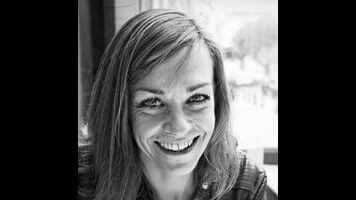Think of every clichéd rom-com starring a beautiful woman who falls in love with a brooding man, and you can predict which beat will be hit next in the endlessly derivative Happy People Read And Drink Coffee. The French best-seller makes its way Stateside in a translation that makes Eat, Pray, Love look like a masterpiece and Under The Tuscan Sun a lovingly formed character portrait. Happy People Read And Drink Coffee adds to the tourism-as-therapy collection, sending Diane, a feisty Parisian, to the Irish countryside after she passes the one-year anniversary of the deaths of her husband and child in a haze of unwashed laundry and cigarette smoke. Living in the standard-issue apartment of all depressed people in stories, Diane leaves her life of overflowing ashtrays, takeout containers, and empty mugs for a cozy rented cottage in the town of Mulranny, where her next-door neighbor is the brusque but good-looking Edward.
Rounding out the boilerplate cast is kooky best friend Felix, Edward’s spunky sister, Julia, and the eventual evil other woman, the vain, stiletto-strutting Megan. Each character is singularly under-drawn; none appear to have any personality traits other than their hair texture and color. Flat characters might be overlooked were there a compelling story to focus the reader’s attention, but that, too, is impressively half-baked, with Diane experiencing only the most rote of encounters, each either directly lifted from a rom-com, as in her scenes with Edward, or a paint-by-numbers “steps to recovery,” as in her few and far between scenes in which she thinks about why she’s in Ireland in the first place.
Author Agnès Martin-Lugand was a practicing clinical psychologist before Happy People Read And Drink Coffee became a hit in France; that background should indicate that, at the very least, her book contains a sympathetic depiction of grief. That is not the case. Although the early pages contain a few examples of how sometimes people grieve in ways that other people don’t like, the bulk of the novel ignores Diane’s bereavement; except for her penchant to burst into tears, it barely deals with Diane’s feelings at all. As she falls in love with Edward a year after her husband dies, her only inner turmoil is, “Would I let Edward’s hands and body replace Colin’s? I mustn’t think about that.” And she doesn’t. Even when Diane cries, there’s never a sense of real emotion. Case in point: An entire crying episode is summed up with, “I cried. From laughing. And from sadness.”
The best thing that can be said about Happy People Read And Drink Coffee is that it’s too toothless to matter. Ostensible offenses—like broadly drawn stereotypes of the Irish population or the casually sexist depiction of a woman who wears heels as evil—are too lazy to be much more than risible. Martin-Lugan has so firmly rejected the writers’ adage of “show, don’t tell” that there aren’t enough details or nuance to paint any picture at all, good or bad.
Verdant Ireland is reduced to postcard dimensions, its people drinking only Guinness, and attempts at setting a scene are unfailingly bizarre, as when Diane and Edward drive home after a romantic weekend: “We each sat engrossed in our own thoughts, lulled by the Red Hot Chili Peppers, a mixture of sweetness and brutality, just like Edward.” Details are mostly avoided in favor of the broadest possible rom-com conventions. It’s both an impressively obtuse story of recovery to be coming from a psychologist and an impressively banal love story for a plot that heavily features falling in love. As for the title? Diane never reads and rarely drinks coffee; a more accurate one might be Miserable People Sleep And Smoke Cigarettes or Sad People Who Are Privileged Enough Don’t Have To Work.









































